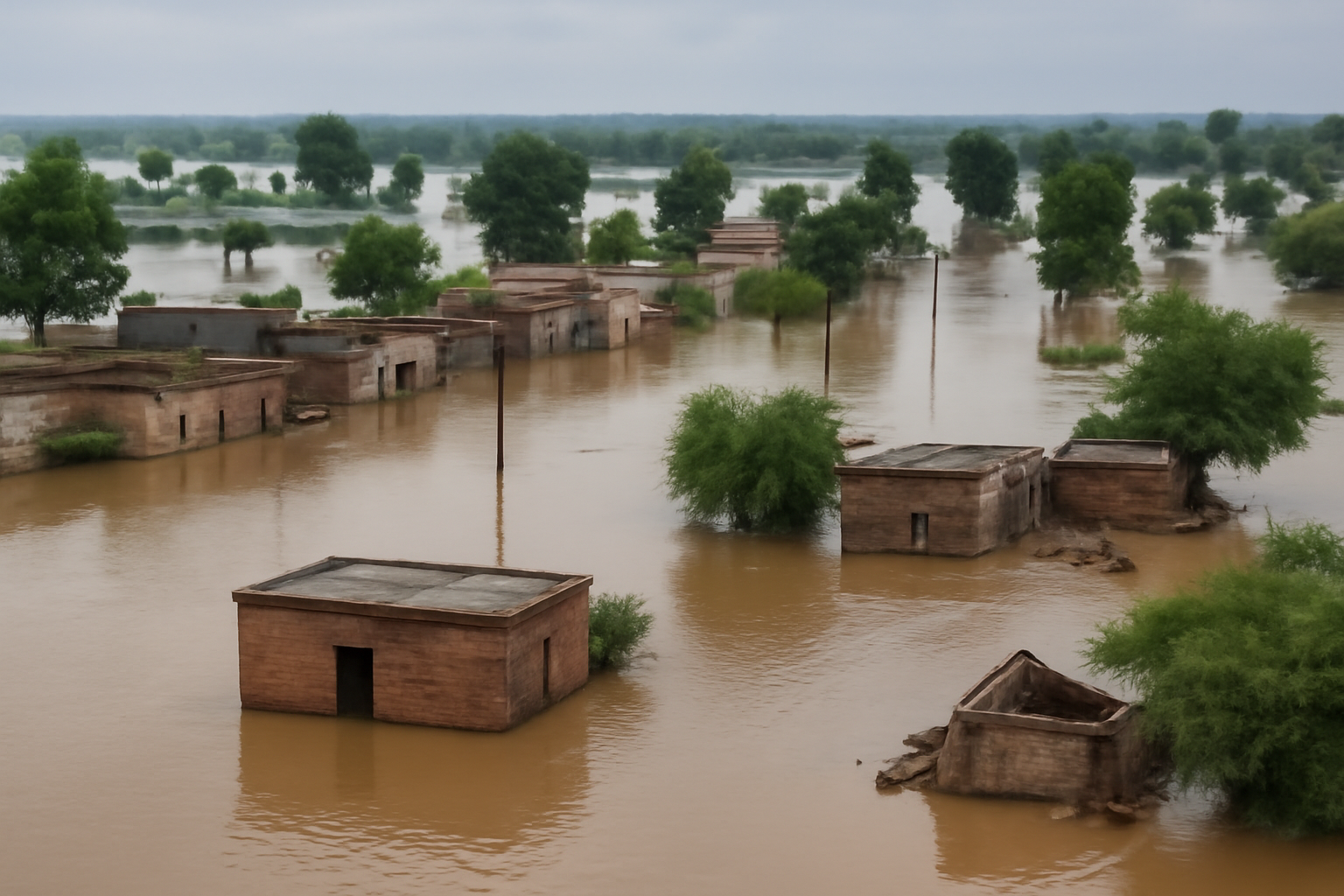
Punjab Declared Disaster-Hit State: Over 1,200 Villages Submerged in Worst Floods in Decades
When rivers turn into oceans and villages into islands, governance stops being theory and becomes theatre. Punjab, India’s agricultural heartland, is staring at one of its worst natural disasters in decades. Relentless monsoon rains, combined with dam releases, have triggered catastrophic flooding across the state. The result: over 1,200 villages submerged, lakhs displaced, and farmlands transformed into waterlogged wastelands.
The state government has officially declared Punjab a disaster-affected state, signalling that the flood is no longer a seasonal inconvenience but a full-blown humanitarian crisis demanding urgent intervention.
A Crisis of Scale: Villages Drowned, Farmlands Lost
Floods are not new to Punjab, but the intensity this year has shocked even seasoned observers. The 3.75 lakh acres of farmland now under water tells its own grim story. For a state whose economy and culture revolve around paddy and wheat cycles, the submergence of standing crops just weeks before harvest is not only a financial blow but also a psychological one.
Livestock, often the invisible savings account of rural households, has also been swept away. The loss of cows, buffaloes, and goats has shattered household economics in villages already gasping under rising debt and falling incomes. The farmer who once worried about Minimum Support Prices is today struggling to find dry ground for his cattle.
The Numbers That Speak Aloud
- 1,200+ villages inundated
- Lakhs displaced, many in makeshift shelters
- 3.75 lakh acres of crops destroyed
- Water levels dangerously high at Bhakra and Pong dams
- 150,000 people evacuated in neighbouring Pakistan Punjab after India’s flood alert
These aren’t just numbers; they are multipliers of misery. Each acre lost means months of labour gone. Each animal lost means a child’s school fee or a daughter’s wedding delayed.
Emergency Powers and War-Footing Response
Recognising the gravity, Chief Secretary KAP Sinha, as Chairman of the State Executive Committee, has invoked emergency provisions under the Disaster Management Act, 2025. District magistrates now have sweeping powers under Section 34 to take all necessary measures in threatened districts.
The administrative machinery is in overdrive:
- PWD has been tasked with restoring broken roads and bridges.
- PSPCL is working on a war footing to bring electricity back to flood-hit homes.
- Telecom providers have been ordered to restore mobile and landline networks without delay.
- DDMAs and Panchayati Raj Institutions have been pressed into service to coordinate relief and rehabilitation.
The operational mantra is clear: restore connectivity, restore confidence. Without electricity, roads, or telecom, relief doesn’t move, and trust in the state evaporates.
Dams at the Edge: A Red Alert Scenario
The crisis is compounded by rising water levels in Punjab’s lifeline reservoirs.
- Bhakra Dam: 1,678 feet, just two feet short of the danger mark.
- Pong Dam: 1,393 feet, already above the danger level of 1,390 feet.
- Sutlej Discharge: Categorised as “high flood level” at Harike and Hussainiwala.
This isn’t just a flood; it’s a warning about climate volatility and infrastructure stress. For years, experts have cautioned that dam management during peak monsoon is a delicate balance. Punjab is now living that reality.
Governance in the Age of Uncertainty
What stands out in this crisis is not just the water but the governance response. Floods test not just embankments but bureaucracies. The directive that all departments ensure staff presence without fail may sound routine, but in disaster management, presence is power. Absenteeism is not just inefficiency; it’s negligence that costs lives.
The insistence on smooth movement of goods and essential services is equally crucial. In disasters, logistics is half the battle. If milk trucks, ambulances, and relief boats don’t move, people lose not just assets but hope.
Beyond Relief: The Rural Economic Fallout
Relief camps and food packets may address the immediate crisis, but the long-term impact is economic. Farmers facing crop loss will struggle with loan repayments. Dairy households without cattle lose their only steady income. The ripple effects will hit rural markets, consumer demand, and even urban supply chains dependent on Punjab’s produce.
Punjab’s floods thus become more than a regional tragedy — they risk becoming a national agricultural and economic shock.
A Mirror to the Future
Climate scientists have long warned that India’s monsoon patterns are shifting, becoming more intense and erratic. Punjab’s current floods might be labelled a “once-in-decades” event, but the uncomfortable truth is that such events may no longer be rare.
The larger lesson: India’s disaster preparedness must move from reactive to proactive, from managing crises to anticipating them. Punjab’s villages today are a wake-up call for policymakers in Delhi, Mumbai, and beyond.
Conclusion: Water, Will, and the Way Forward
Punjab’s floods are devastating, but they are also instructive. They show the fragility of rural livelihoods, the centrality of responsive governance, and the urgency of climate adaptation.
Declaring the state disaster-hit is not just a legal label; it is a moral responsibility. Relief will pour in, but rebuilding must focus not just on roads and homes but also on resilience — in agriculture, in dam management, and in rural economies.
Because in Punjab today, the water may recede in weeks, but the lessons must not.



